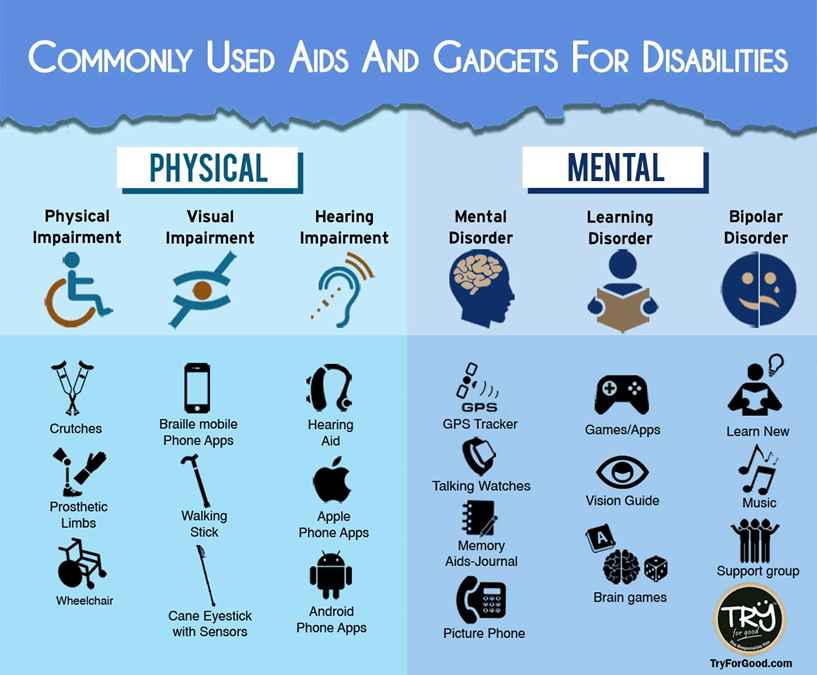Serving Diverse Needs with
Assistive Technology
1.
Specific learning disability (SLD)
Dyslexia
Dyscalculia
Dysgraphia)
2.
Other health impairment
The “other health impairment” category covers
conditions that limit a child’s strength, energy, or alertness, ADHD, which
impacts attention and function.
3. Autism
Spectrum Disorder (ASD)
4. Emotional
disturbance
5. Speech or
language impairment
6. Visual
impairment, including blindness
7. Deafness
8. Hearing
impairment
9. Deaf-blindness
10. Orthopedic
impairment where a child or adult lacks function or ability in the body and
impairments such as cerebral palsy.
11. Intellectual
disability where a child or adult has below-average intellectual ability, poor
communication, self-care, and social skills. Down syndrome is a condition that
involves an intellectual disability.
12. Traumatic
brain injury is a brain injury caused by an accident or physical force.
13.
Multiple disabilities - where a child or adult has
more than one condition covered by IDEA. Multiple issues create educational
needs that can’t be met in a program designed for any disability.
In any one or all of the IDEA list of
disabilities, children and adults with disabilities may need Assistive
Technology to help assist them in having a need met depending on what
their disability is. Depending on the device available in each location, many
devices can be provided in a classroom, resource center, and library. The
library centers and Disabled student services can provide these devices.
Assistive Technology Equipment refers to
different items to assist a person’s learning, eating, and bathing needs.
These items include self-help devices, specialized toys, switches, listening
devices, and talking devices. They are available to children and adults with a particular
need to promote their education in developing and learning, eating, and daily
hygiene routine.
1. Self-Help
Devices - Assist with self-help skills and functional abilities related to
bathing, eating, drinking, and dressing.
2. Toys and
Switches - Allow children and/or adults to activate a toy that will support engagement
in developmental learning through play.
3. Assistive
Listening Devices - Helps with auditory processing. These devices include
hearing aid and FM Systems. It will assist anyone and also the sight
impaired.
4.
Augmentative Communication – a device, system,
or method that improves the ability of a child to communicate
effectively. For young children, it is essential to include gestures and
pictures. Equipment may include photographs, object communication boards,
symbol systems, and voice output devices. When a child pushes a button on
the device to say a pre-recorded word or message, the controls are labeled with
pictures or symbols to show the recorded message.
5.
Mobility and Positioning devices promote and
enhance access to and functioning in a child's natural environments. Equipment
may include ankle foot splints, car seats, floor mobility and positioning
devices, feeder seats, walkers, and standers. The walker will assist with
balance and mobility, and the scooter board will assist in moving in all
directions with four switches and a joystick that will impact the board in
whatever order it is directed.
References:
Technology Access and Assistive Technology |
Advocacy, Legislation & Issues (ala.org)
“Technology
Access and Assistive Technology.” Advocacy, Legislation & Issues,
American Library Association, 5 May 2023, www.ala.org/advocacy/diversity/accessibility/techology-access.





Comments
Post a Comment